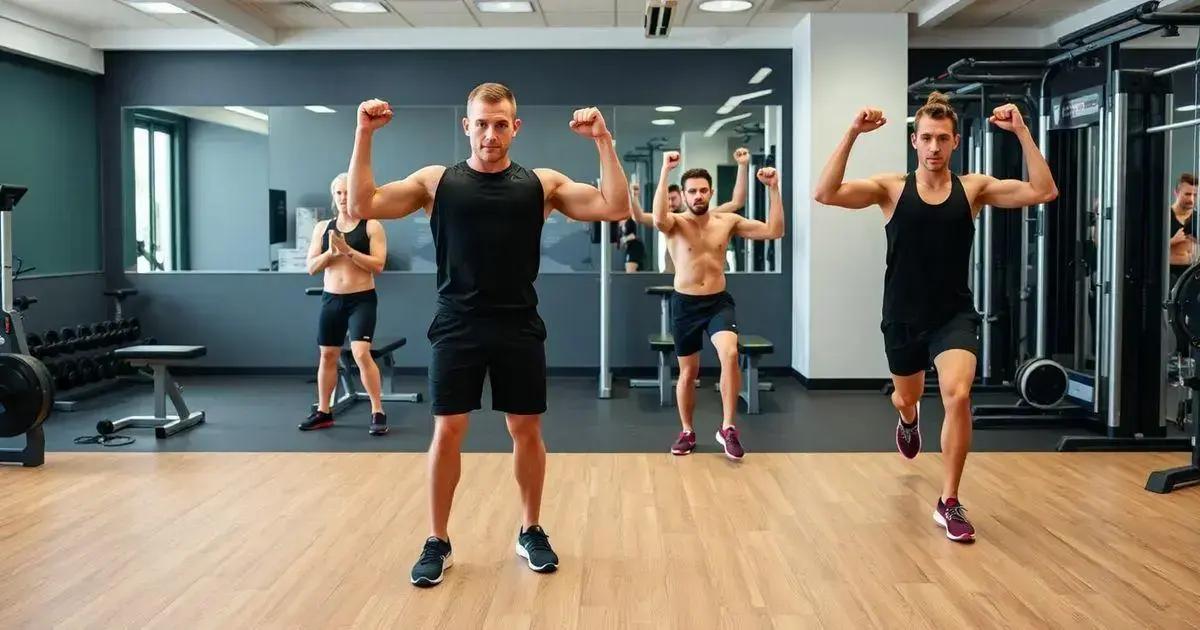Isolated muscle training involves exercises that target specific muscle groups, helping to improve strength, muscle definition, and prevent injuries. Effective exercises include bicep curls, tricep extensions, and leg curls. To integrate isolated muscle training into your routine, design a balanced schedule, pair exercises with compound movements, and maintain consistency for optimal results.
Isolated muscle training can dramatically enhance your workouts by focusing on specific muscles for improved strength and definition. This technique targets individual muscle groups, allowing you to develop strength in areas often overlooked in compound movements. In this article, we delve into the essentials of isolated muscle training, its benefits, effective exercises, and how to seamlessly integrate this approach into your existing workout routine.
Understanding Isolated Muscle Training

Understanding isolated muscle training is essential for anyone looking to refine their workout routine. This type of training focuses on working a single muscle or muscle group at a time. It contrasts with compound exercises that engage multiple muscle groups simultaneously. By isolating specific muscles, you can increase strength, improve muscle definition, and enhance overall fitness.
Isolated Muscle Training Defined
Isolated muscle training involves exercises designed to target a particular muscle. For instance, bicep curls focus specifically on the biceps, while leg extensions emphasize the quadriceps. This approach helps to concentrate effort on specific areas, leading to nuanced muscle development.
Why It Matters
Focusing on isolated muscle training can be especially helpful for correcting muscle imbalances, preventing injury, and aiding in rehabilitation after an injury. By strengthening weaker muscles, you can enhance your overall performance in both daily activities and sports.
Key Points to Remember
Keep in mind that while isolated muscle training is beneficial, it should complement a broader workout regimen that includes compound movements. This combination ensures that overall strength and functional fitness are achieved.
Incorporating isolated muscle training into your workouts requires careful planning and attention to technique. This way, you can maximize the benefits while minimizing risk to your muscles and joints.
Benefits of Isolated Muscle Training

Benefits of isolated muscle training are numerous and can greatly improve your fitness journey. This type of training allows you to concentrate on specific muscle groups, helping to enhance strength and performance in those areas.
Improved Muscle Definition
One major benefit is the improvement in muscle definition. By focusing on one muscle at a time, you can achieve a more toned appearance. Isolated training helps reveal the underlying shape of muscles, especially when combined with proper nutrition.
Strengthening Weak Points
For athletes or fitness enthusiasts, isolated muscle training targets weak points in your workouts. Strengthening these areas can lead to better performance during compound exercises, like squats or bench presses, by balancing muscle strength across your body.
Injury Prevention and Rehabilitation
Another advantage is injury prevention. Isolated exercises can address imbalances and weaknesses that lead to injuries. If recovering from an injury, these targeted movements help rebuild strength safely.
Flexibility in Training
Isolated muscle training offers flexibility in workout routines. It allows you to create specific muscle group days, ensuring each area gets the attention it needs. This can prevent overtraining and encourage muscle growth.
Overall, the benefits of incorporating isolated muscle training can enhance your workouts, maximize results, and contribute to a well-rounded fitness plan.
Effective Exercises for Isolated Muscle Training

Effective exercises for isolated muscle training play a crucial role in achieving fitness goals. Here are some popular exercises to incorporate into your routine.
Bicep Curls
Bicep curls are a classic isolated exercise targeting the biceps. Using dumbbells or a barbell, stand with your arms at your sides and palms facing forward. Curl the weight up towards your shoulders, keeping your elbows close to your body.
Tricep Extensions
Tricep extensions focus on the back of the arms. You can perform this exercise standing or seated. Hold a dumbbell with both hands above your head, arms extended. Slowly lower the weight behind your head, then press it back up to the starting position.
Leg Extensions
Leg extensions target the quadriceps. Sit on a leg extension machine and adjust the pad just above your ankle. Extend your legs to lift the weight, then lower it back slowly. This exercise is excellent for building strength in the thigh muscles.
Leg Curls
Leg curls focus on the hamstrings. Use a leg curl machine, lying face down or sitting up. Curl your legs upwards against the resistance, then slowly return to the starting position, ensuring control throughout the movement.
Calf Raises
Calf raises help strengthen the calf muscles. Stand on the edge of a step with your heels hanging off. Rise onto your toes, then lower your heels below the step level. This exercise can be done with or without weights.
Incorporating these effective isolated muscle training exercises into your routine can significantly improve your strength and muscle definition.
Integrating Isolated Muscle Training into Your Routine

Integrating isolated muscle training into your routine can enhance your fitness results significantly. Here are some practical steps to help you incorporate these techniques effectively.
Assess Your Current Routine
Start by evaluating your current workout program. Identify areas that could benefit from isolated muscle training. For example, if you notice weaknesses in specific muscle groups, consider adding exercises that target those areas directly.
Design a Balanced Schedule
Creating a balanced workout schedule is essential. Incorporate isolated muscle training on days when you focus on specific body parts. For instance, you might dedicate one day to arms, another to legs, and so on. This method prevents overtraining while ensuring every muscle group gets attention.
Pair with Compound Exercises
Integrate isolated exercises with compound movements for a comprehensive workout. For example, after doing a set of squats (a compound move), follow it with leg curls to enhance hamstring strength. This pairing leads to well-rounded muscle development.
Monitor Progress and Adjust
Keep track of your progress. Monitor your strength gains and how your body responds to isolated muscle training. Adjust your routine as necessary, increasing weights or changing exercises to continue challenging yourself and avoiding plateaus.
Stay Consistent
Consistency is key. Aim to include isolated muscle training in your routine at least two to three times a week. Even short sessions can lead to significant improvements in strength and muscle tone when done regularly.
Incorporating Isolated Muscle Training for Optimal Workouts
Integrating isolated muscle training into your fitness routine can significantly enhance your overall performance and results. By understanding how to effectively target specific muscles, you can boost strength, improve muscle definition, and prevent injuries.
Incorporating exercises like bicep curls, tricep extensions, and leg curls can lead to impressive gains in muscle strength. Furthermore, designing a balanced workout schedule that combines isolated and compound exercises will create a well-rounded training program.
Consistency is key to success. By regularly including isolated muscle training in your routine, you will find that your strength and physical appearance improve over time. So, take the time to implement these strategies and watch your fitness level soar.
FAQ – Frequently Asked Questions about Isolated Muscle Training
What is isolated muscle training?
Isolated muscle training refers to exercises that target a specific muscle or muscle group, allowing for focused strength development.
Why should I incorporate isolated muscle training into my routine?
Incorporating isolated muscle training helps improve muscle definition, corrects imbalances, and boosts overall strength in targeted areas.
What are some effective exercises for isolated muscle training?
Effective exercises include bicep curls, tricep extensions, leg curls, calf raises, and leg extensions, each focusing on specific muscle groups.
How can I integrate isolated muscle training into my existing workouts?
You can integrate isolated muscle training by designing a balanced schedule, pairing it with compound exercises, and tracking your progress.
How often should I perform isolated muscle training?
Aim to include isolated muscle training in your routine at least two to three times a week for optimal results.
Can beginners do isolated muscle training?
Yes, beginners can perform isolated muscle training. It’s important to start with lighter weights and focus on proper form to avoid injury.












